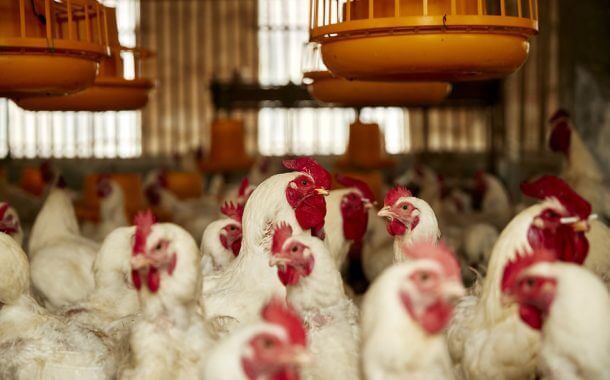There are a bigger number of chickens on the planet than some other fledgling. Truth be told, in excess of 50 billion chickens are raised yearly as a wellspring of food, for both their meat and their eggs. Interesting Facts about Broiler Farming – What you need to know about Broiler Farming
Chickens farmed for meat are called Broiler chickens, while those cultivated for eggs are called egg-laying hens.
The Natural Life of Chickens
Chickens are gregarious winged creatures and live respectively as a flock (brood) with an unmistakable progressive system or “hierarchy.” They would normally go through their day rummaging for food, scratching the ground searching for creepy crawlies and seeds.
At the point when a cockerel discovers food, he may call the hens to eat it by cackling in a high pitch and getting and dropping the food. This conduct can likewise be found in mother hens, calling their chicks.
Chickens will in general reach broadly, utilizing the front of trees and vegetation for security from hunters.
Also read these op Trending Posts:
Farming with Broilers chickens

Life on certain ranches and little possessions is much the same as that. Shockingly, by far most of the 50 billion chickens raised every year experience serious cultivating techniques.
Various techniques are utilized for creating meat chickens
In 1950, chicken was eaten as a treat; British individuals ate not exactly a kilo in an entire year. Presently, we eat on normal 25kg in a year – that is in excess of 2 kg for every month.
Chickens Live fast and Die Young
Broilers (chickens cultivated for meat) have been reared to become greater and quicker. Chickens can live for at least six years under regular conditions. Anyway those utilized in serious cultivating will normally be butchered before they arrive at about a month and a half old.
Unfenced ovens will normally be butchered at about two months old and natural Broilers at around 12 weeks old
There are various government assistance issues for broiler chickens.
By and large, grill sheds are fruitless aside from water and food focuses, with no regular light. There is litter on the floor to ingest droppings however this isn’t cleared out until the chickens have been eliminated from the shed for butcher.
The air can turn out to be profoundly contaminated with smelling salts from the droppings. This can harm the chickens’ eyes and respiratory frameworks and can cause agonizing consumes on their legs (called ‘hawk consumes’), chests and feet.
Chickens limited in these desolate sheds can’t change their current circumstance to dodge warmth, cold or soil as they would in regular conditions.
It can get exceptionally blistering inside the sheds, particularly in summer. On the off chance that the ventilation framework falls flat, a large number of chickens can bite the dust of warmth stress.
Quick Growth
Seriously raised chickens have been reproduced in the course of the most recent couple of a long time to become rapidly. In any case, there are tremendous government assistance expenses to this expanded development rate. They invest quite a bit of their energy resting in light of the fact that their legs are not sufficiently able to help their weighty body loads and a considerable lot of them experience the ill effects of difficult leg problems.
The fast development additionally puts a strain on their souls and lungs, they experience the ill effects of weakness and don’t have a lot of energy for work out. Quickly developing ovens invest less energy performing characteristic practices, for example, strolling, pecking, scratching the litter and roosting, and additional time sitting and eating, than more slow developing varieties. In the UK alone, a huge number of chickens kick the bucket in their sheds from respiratory failures every year.

Congestion
A huge number of fowls can be housed in each shed. The 2007 EU Directive on oven chickens permits what might be compared to around 19 fowls for each square meter, contingent upon their weight at butcher. This implies that each feathered creature has less floor space than the size of an A4 piece of paper.
Chickens in packed sheds have almost no space for practice and are upset or trampled on when they are resting. As they develop, they have less and less space to move and think that its more hard to arrive at food and drink in the event that they are weak. Swarming is additionally liable to prompt more air contamination, expanded warmth stress and foul litter.
Feed Restriction for Breeders
The quick development of ovens is joined by an expanded craving. In spite of the fact that most of ovens are slaughtered for meat as adolescents, some are saved for more to be utilized for rearing. Because of the medical conditions related with quick development, chickens utilized for reproducing are kept on limited weight control plans. They experience the ill effects of pressure, dissatisfaction and constant yearning therefore.
Transport and Slaughter
Prior to move to butcher, broilers are generally denied of nourishment for a long time, leaving them focused and hungry. Getting, crating and transport are distressing and can bring about wounding and broken bones. Broiler chickens are either gotten by hand by a group of catchers, or are gotten utilizing a getting machine. Around 20 million chickens for every year are now dead when they show up at EU slaughterhouses.
Interesting Facts about Broiler Farming – What you need to know about Broiler Farming
- YouTube Channel: Farming South Africa
- Facebook Page: Farming Life
- General Farming Farming South Africa
- Back To Home Page: Chicken Farming South Africa
Farming South Africa – What you need to know about Broiler Farming
Source: Farming With Chickens
Tags: Farming with Chickens, Is chicken farming profitable, ross broilers, broiler chickens, farming broilers, how to farm with broilers,


One Reply to “What you need to know about Broiler Farming”